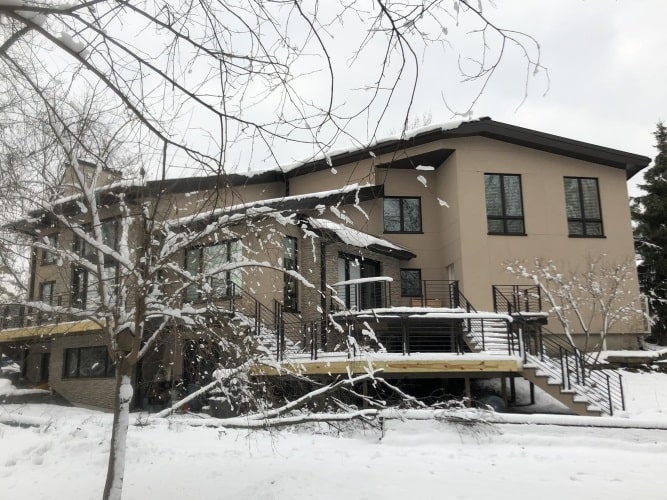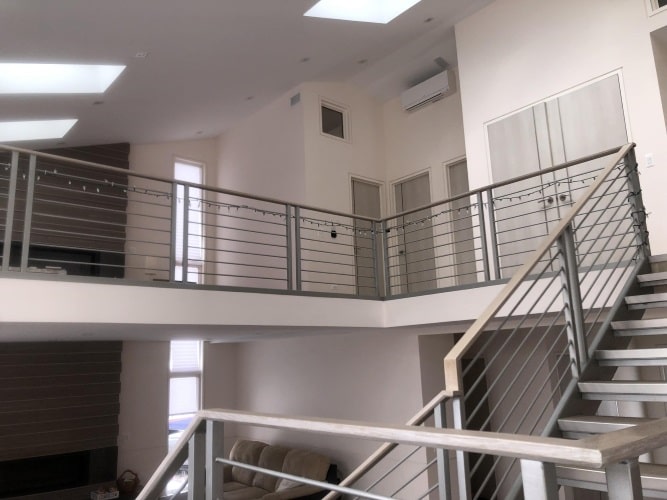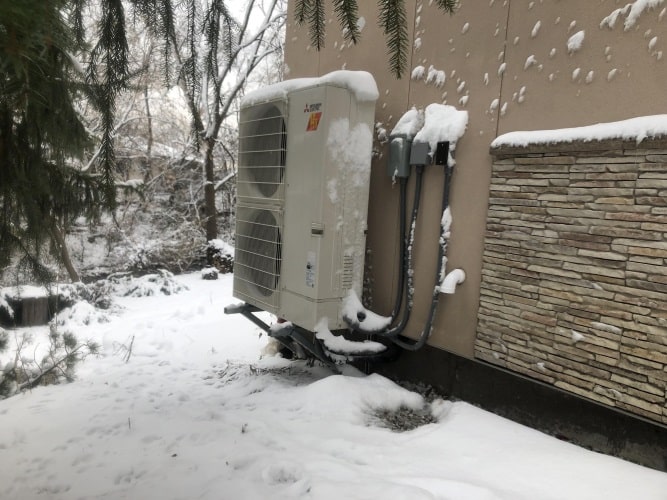Help You?
CLICK TO LEARN MORE ABOUT IRA REBATES AND TAX CREDITS
COOLING A GREEN HOME IN GLEN ELLYN, IL WITH DUCTLESS AC
Cooling A Green Home In Glen Ellyn, IL With Ductless AC
Our homeowners in Glen Ellyn, IL are proud of their green home. The house uses as few resources as possible. Adding a ductless AC and heat mini-split let them cool off in the summer while sticking to thier conservation effort.
This beautiful luxury home in DuPont County used radiant floor heating during the cold months. With this, you feel warm walking across the floor. Meanwhile, the temperature in the room goes up as that warm air rises.
It’s a typical setup for green homes. And, it’s definitely a great touch in a luxury home. But, it has a few drawbacks.
Sometimes, it just doesn’t quite warm a room quick enough. Or, there’s a gap in the warmth or a lag from when it kicks on until you really feel it.
And, of course, it’s just heating. You can’t add central air conditioning to the system.
So, our homeowners called Compass Heating and Air Conditioning Inc.. They wanted some AC and supplemental heating. But, of course, it was important that whatever they added was energy-efficient. In other words, they wanted to stick to their home’s mantra and use as few resources as possible.
They read about our work and saw our online reviews from all over the Fox River Valley, especially in nearby Wheaton and with other green homes in Palatine. When we looked over their home, we knew just what it needed.
Problem: A green home in Glen Ellyn, IL had radiant in-floor heating but no air conditioning.
Solution: Installed a Mitsubishi Ductless Hyper Heat AC system for energy-efficient climate control.

HVAC options for a green home

People with gas or oil furnaces use fossil fuels to get the job done. Similarly, central air uses a lot of electricity. That’s even more so with portable window or in-wall ACs.
Green home designs, on the other hand, shrink that usage as much as possible. You’ll find a lot of insulation. This keeps all that treated air in the house rather than leaking out. Energy-efficient light bulbs and solar panels are common, too.
Ultimately, you want to make sure that whatever you use for climate control doesn’t use any more energy than it needs to. That’s partially handled by the design of the house. You can make sure there’s proper air flow to prevent hot and cold spots, for instance.
That’s where a system like the one we installed comes in handy.
Is ductless AC and heat energy-efficient?
- Using a low-power mode
- Creating “zoned” HVAC
- Using a heat transfer systemThat’s
what attracted our homeowners to this ductless system, which is also called a mini-split system. This way, they could finally cool their home in the summer. They’d also stay warmer in the winter. And, they’d use as little energy as possible.

Outside is a heat pump. It uses a heat transfer process to move warm air into the house when it’s cold out. And, it dehumidifies and moves the warm air out in the summertime.
This process uses thermodynamic properties to move the warmth around. That’s much different from using energy to generate warmth or cool down coils to provide air conditioning. Instead, it just needs a little bit of power to kick-start that process.
From there, the air handlers play a huge part in keeping energy consumption down. One way is with inverter technology: a low-power, “cruise control”-type setting.
When you think about a furnace, you think of two settings: Off, when it’s not doing anything. And then, On when it suddenly comes on full-blast.
It’s suddenly pumping up the temperature when your thermostat shows it’s dropped. The mini-split, on the other hand, maintains the temperature more evenly.
Once your thermostat reads the temperature you want, the panels switch to low-power. They use just a tiny bit of energy to keep the temp from dropping or rising. That uses less electricity than suddenly switching on to full power and working to correct the climate.
What is zoned HVAC?
Instead, each zone gets exactly the treatment it needs. No more, no less. If that master bedroom takes forever to warm up, that’s fine. The panel up there works ‘till the job’s done.
But, the air handler in the living room may shut off much sooner. Once that zone is good to go, the panel won’t keep treating it. By zoning, you use less energy overall by treating each area on its own.
This is great for homes that have people who can’t agree on temperature, or have trouble fixing that problem room. And, all that efficiency does more than just helping the environment. It also helps our homeowner’s budget by saving on energy costs.
Saving money with a mini-split

Dollar for dollar, you get better climate control for less money with a mini-split than with furnaces or other HVAC solutions. That happens with lower monthly energy bills. And, in many cases, there are also significant up-front savings.
Let’s look at that up-front benefit first. Our homeowners aren’t the only ones interested in using less electricity. You may be surprised to learn that most utility companies feel the same way.
Today, electric providers like ComEd in Chicagoland encourage their customers to install energy-efficient appliances. Part of that is because they can make more money this way. When their customers use less power, they can serve them while not having to invest in expanding their infrastructure.
That makes a big difference in the overall cost. And, of course, our homeowners rest easy knowing they’re getting the comfort they want. But, they’re also making the least possible impact on the environment — and their wallet.
Are you interested in cooling and supplemental heat for your green home? Contact us, and we’ll design a system that’s perfect for you.

